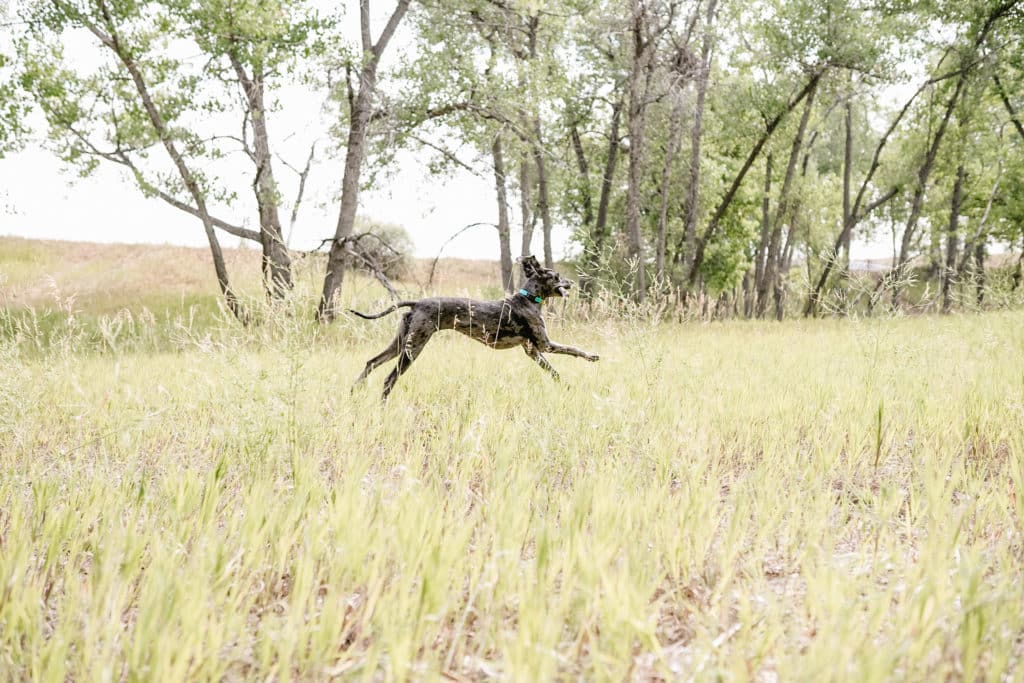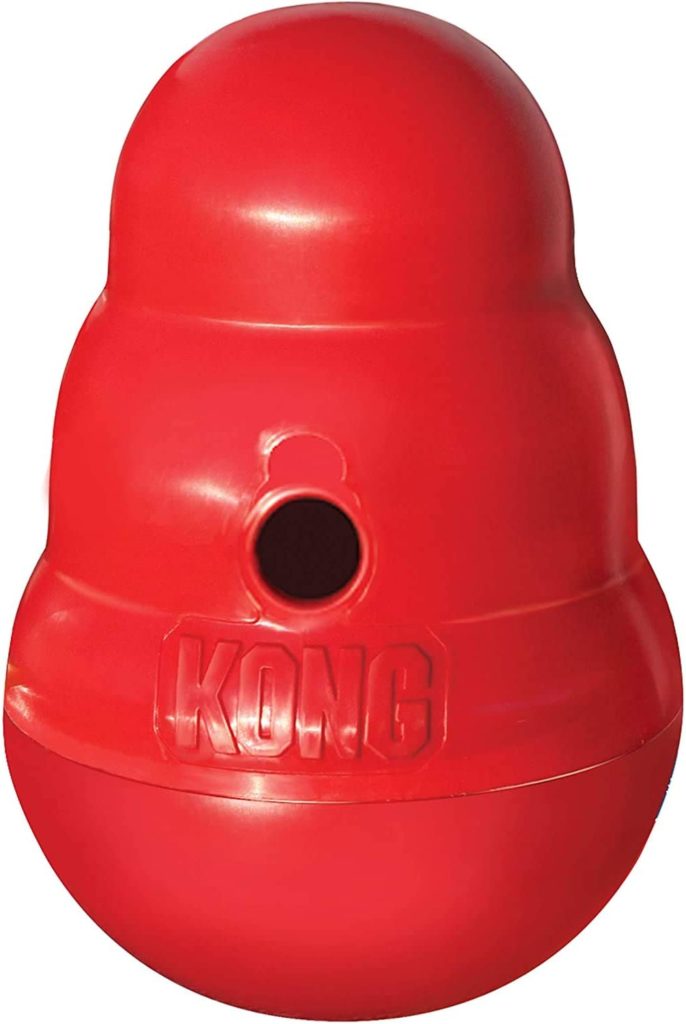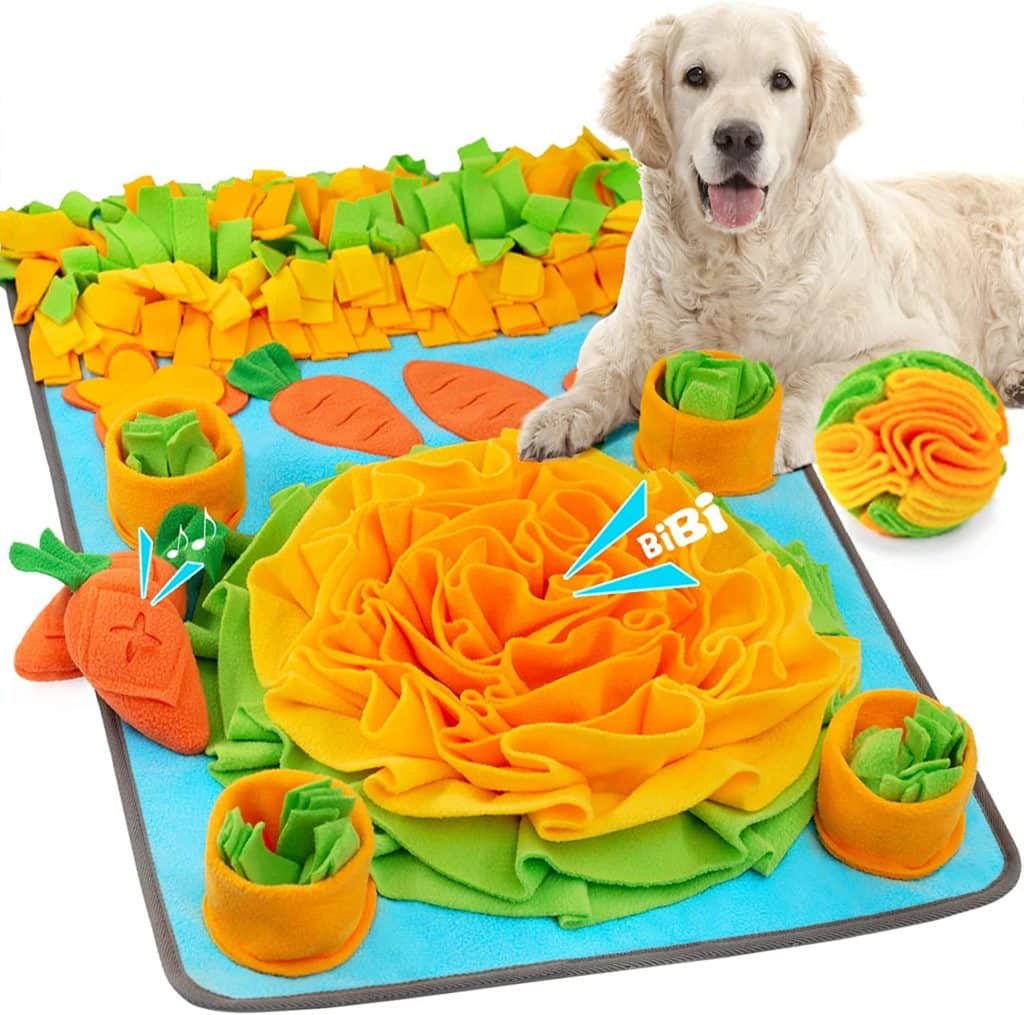Great Danes are often seen as couch potato dogs that don’t need a lot of exercise. This is a bit of a myth! Of course, every dog is different, so considering their age, health, and energy levels is key. But Great Danes can be a surprisingly athletic and agile dog!
We believe in allowing Great Danes freedom to run, play, and explore. Too many people allow their big dogs to become obese, which can shorten their lifespan by two years on average. All too often we’ve noticed that obesity and the outdated belief that resting after meals will “prevent bloat” go hand in hand (read more about the resting myth here).
The truth is that most Great Danes are not getting enough enrichment OR movement, and it’s causing health issues, anxiety, destructive behaviors, and boredom.
Today we’re going to dig into this and discover:
- How much exercise do Great Danes need
- If Great Danes are a high energy dog or a couch potato
- How to keep a Great Dane fit and healthy
- Alleviating boredom, “stubbornness”, and destructive behaviors with exercise and enrichment
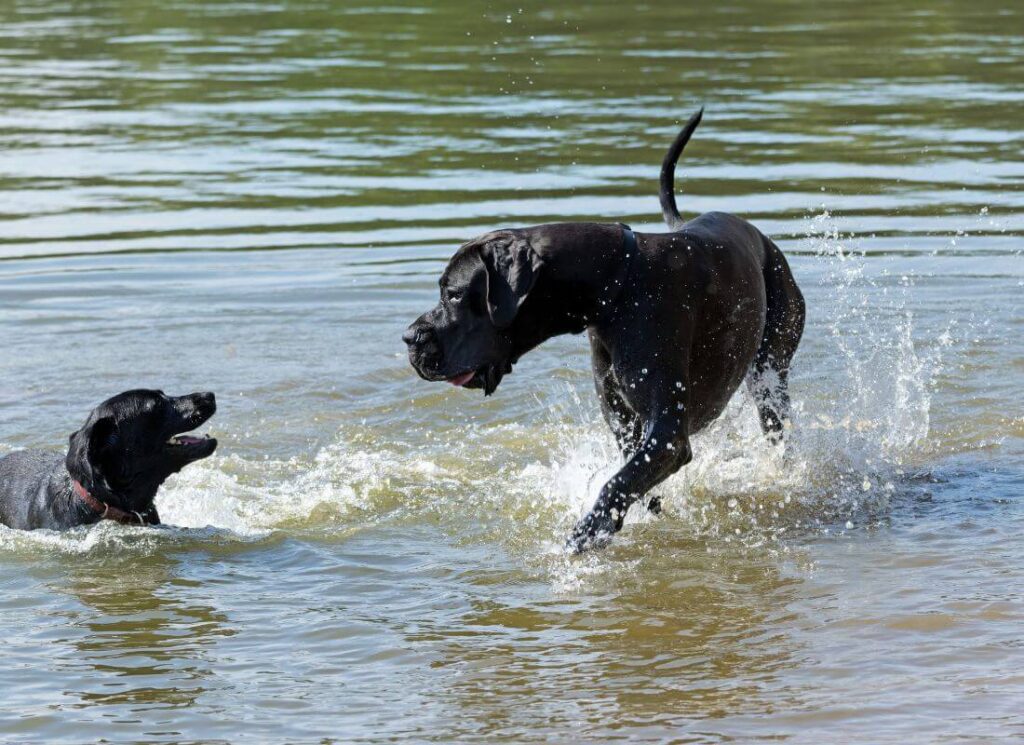
What is it Like to Live with a Great Dane?
Great Danes are giant breed dogs that weigh anywhere from 120 to 200 pounds. They are one of the tallest breeds of dogs, and they are also one of the heaviest.
Despite their large size, Great Danes are gentle giants who are known for being loving and affectionate with their families. Great Danes thrive on human interaction and many enjoy guests in your home and will happily meet people in public, too.
Well-bred, well-trained, and properly socialized Great Danes are a joy to live with.
It’s important to choose a reputable and dedicated Great Dane breeder, as aggression and fearful behavior have roots in genetics and unethical puppy-raising practices.
Many Danes, unfortunately, suffer from anxiety and stress, which can also increase their risk of bloat.
Make sure that your Great Dane is well-socialized and give your dog plenty of opportunities to build confidence and positive associations with the world.
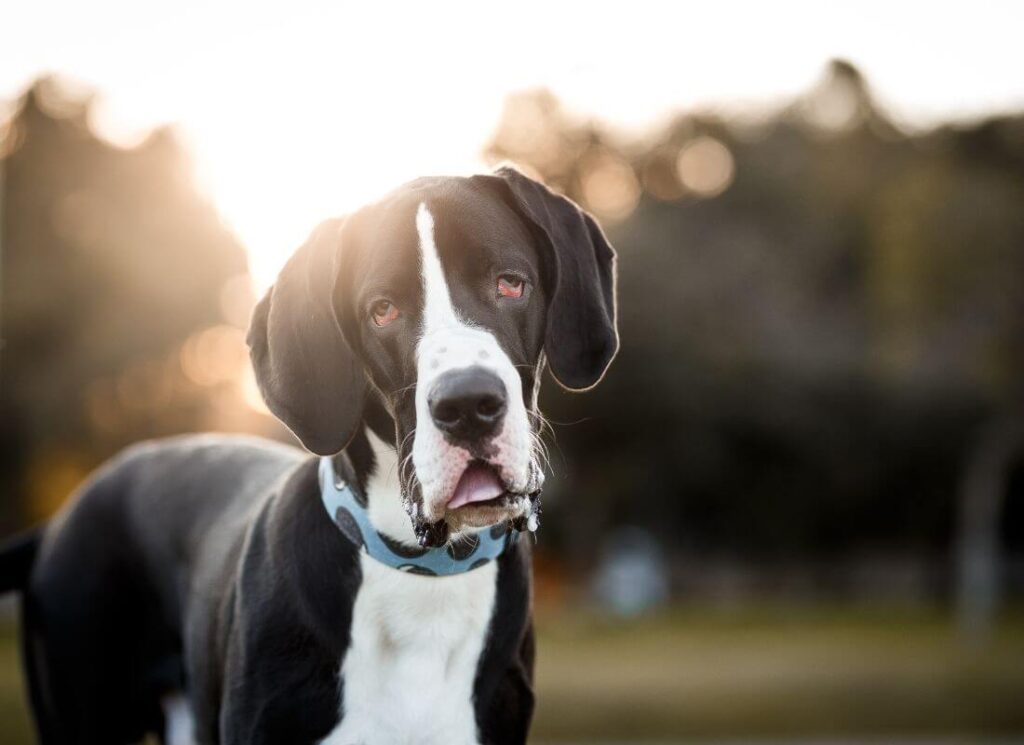
Do Great Danes Need a Big House?
Contrary to popular belief, Great Danes don’t need a huge house or yard! Unlike higher-energy working breeds (such as poodles or shepherds), many Great Danes have an excellent off-switch.
This means that when they are provided with enough enrichment and exercise, they are perfectly content to lounge (so long as there is a couch with their name on it).
The key word here, however, is enrichment.
Even the calmest and most docile Dane can become destructive when bored, anxious, or under-stimulated.
Many people believe that some toys, other pets, and a yard are enough. They are then surprised when their huge dog eats the house!
All big dogs, but especially Great Danes who live in smaller homes or in homes with no yard benefit greatly from off-leash training.
This will allow them natural freedom of movement and opportunities to explore the environment without frustrating physical restraints.
You don’t need a big house, as long as you are willing to give your Great Dane access to the big world.
Do Great Danes Need a Fenced Yard?
A fenced yard is a wonderful thing to have, but we know that many people who live in apartments or in homes with no fencing would love to own a Great Dane!
If you live in an apartment, we recommend that you get involved in some form of dog sports such as rally obedience, scent work, off-leash hiking, or even just basic obedience classes.
This will give your dog the physical and mental stimulation that they need to be happy and well-adjusted.
Are Great Danes High-Energy Dogs?
There is a misconception that Great Danes are couch potatoes.
Many Dane owners are surprised to find that their dog needs a good amount of exercise!
While Great Danes are not as high-energy as some other breeds, they do need daily exercise to stay happy and healthy.
Some dogs will respond to a lack of enrichment by becoming depressed and having low energy.
Others will be difficult to control, noisy, and frustrating.
A bored or under-enriched Great Dane can, AND WILL, destroy your home. That’s not fair to you or to the dog who felt the need to do it in the first place.
Unlike a small herding dog, a Great Dane has large teeth and can eat entire couches, tear up the carpet, and shred drywall in a matter of minutes.
Some people mistake these behaviors as ‘defiance’ or ‘spite’. The truth is that the dog is simply bored and needs an outlet for its energy.
Providing your Great Dane with daily exercise, both mental and physical, is the best way to prevent them from becoming destructive.
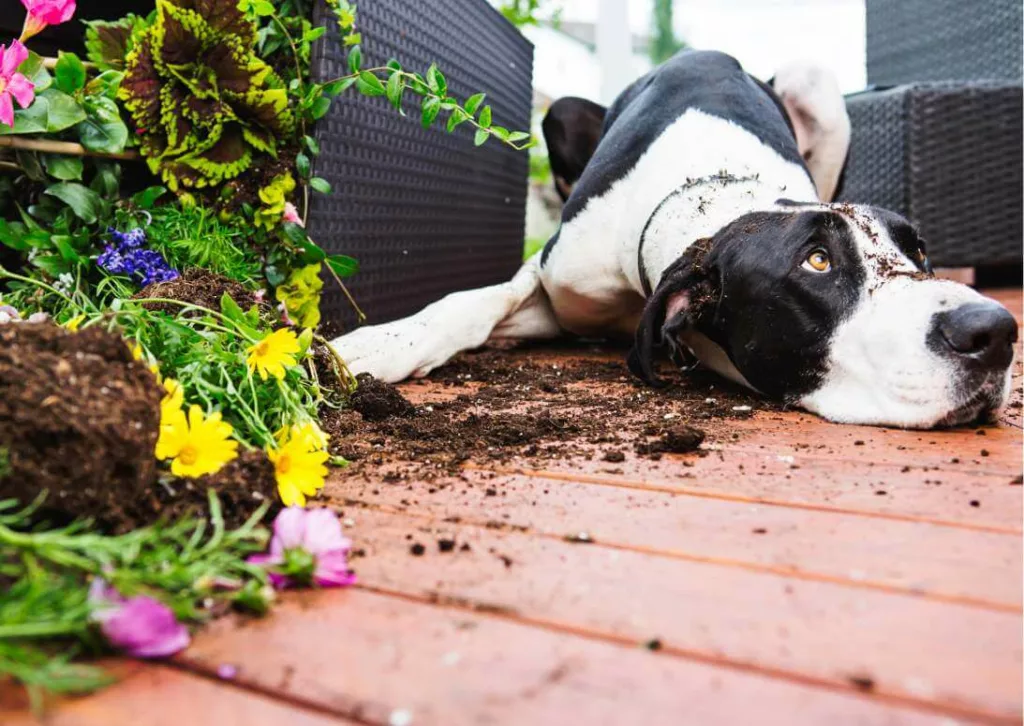
Can Great Danes Stay Home Alone?
Great Danes are not the best breed for people who work long hours or are gone frequently.
Like all dogs, they require regular exercise, which may be difficult to provide if the schedule is too busy to provide much more than a few short walks.
While they can stay home alone for short periods, they do much better in homes where someone is around more often. Great Danes thrive on social contact with humans and other dogs, so daily isolation can be hard on them.
If you work long hours or are gone frequently, we recommend that you get a dog walker to let them out and make sure to set aside plenty of time in the morning or evening to let them get some exercise. You can also use a FURBO (see our review here) to monitor them on video and toss treats at them when you aren’t home!
One important note to keep in mind: too much crate time can make Great Danes unstable and weak.
Make sure that your dog can move freely often and has the opportunity to experience off-leash freedom outdoors.
This will keep their muscles and tendons strong.
If you must leave your Great Dane for long periods, make sure they are receiving plenty of enrichment when you are home.
A confident, properly exercised dog will likely sleep while you are gone all day!
How Much Exercise do Great Danes Need?
Joint health and muscle development are key considerations when exercising your Great Dane.
Young puppies have soft growth plates that are easily damaged by slick floors, pavement, forced running, and jumping.
Panosteitis, HOD, Knuckling, and Angular Limb Deformity are just some orthopedic disorders that can result from damage to the limbs.
Older dogs, especially those fed incorrect nutrition as puppies, that are genetically prone to things such as flat feet or hip dysplasia, or that are overweight, will need additional special care regarding movement and exercise.
Read on to learn more about Great Dane enrichment and exercise!
Great Dane Puppies Exercise
We recommend that the majority of enrichment your puppy receives comes from off-leash play and positive socialization.
Walks are, quite frankly, overrated! A growing puppy does not make a great running partner, either.
Large breeds (and giants especially) should be fully mature before engaging in running or long walks on pavement.
Our socialization guide covers several activities that build strength and confidence, including fun puppy playgrounds, exploration, and early training tips. We’ve included alternatives to traditional ‘walks’ that are more fun, engaging, and enriching!
Many people believe that their puppy should “go on walks”, but we don’t consider that an important form of exercise for most dogs, especially Dane puppies.
Walks, if used, should be for socialization and training purposes, or to get from point a to point b. Good leash skills are important and all Great Danes must be taught to walk politely from a young age.
However, a daily walk is the most over-rated form of exercise we can think of. Walking on pavement does little for muscle development and mental enrichment, especially when you compare this activity to a more natural form of exercise (off-leash exploration).
Puppies need a LOT of sleep. Make sure your Great Dane puppy is resting and napping often. When your puppy is awake, work on socialization and basic positive reinforcement training!
The more time you can spend exposing your puppy to different textures, sights, and sounds, the better.
15 minutes in a small kiddie pool filled with some water and floating toys is much better enrichment for a puppy than a walk.
As above, keep in mind that your puppies’ joints require care. Avoid slick floors, jumping, and excessive playing or running on asphalt and pavement.
Health problems related to joints are a common problem with Great Danes, and a little care when they are young will go a long ways!
Crates are important for keeping your Great Dane safe when it has to be left alone, however, too much crate time can lead to weak feet and poor development.
The BEST Huge Crates for Great Danes 2022
Keep this in mind when evaluating if a Great Dane puppy is the right fit for your family.
You can provide a secure area with a lot of space for your puppy to move (such as an empty room) as an alternative to excessive crate times, and hire a dog walker to help.
We recommend limiting crate time to no more than one hour per month of life, and no more than 8 hours from 8 months of age up.
For proper bone development, it’s also important that your Great Dane puppy is being fed an appropriate large or giant breed puppy food.
This will ensure that their bones and muscles are receiving the correct balance of nutrients to thrive. See our most popular nutrition articles below for more information!
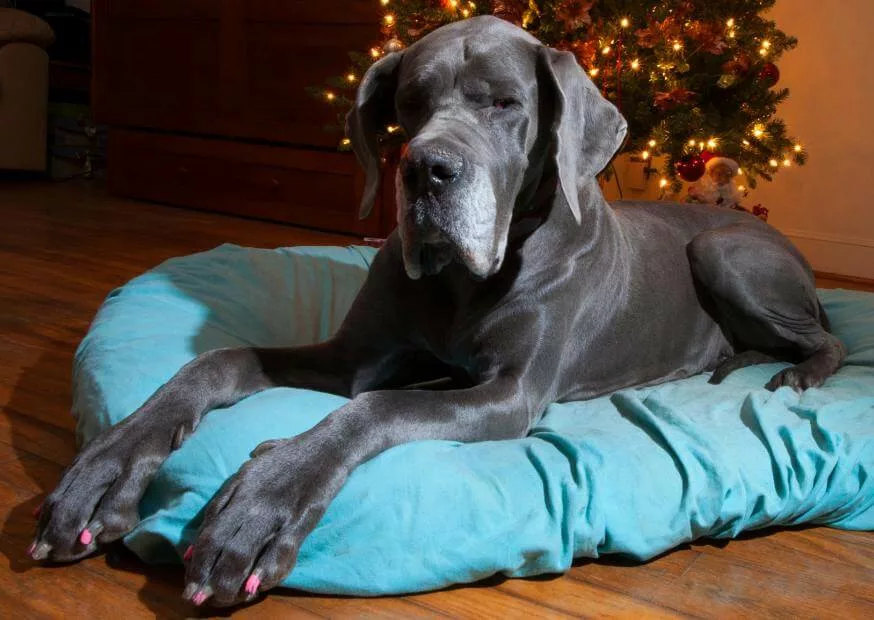
Great Dane adult exercise
Adult Great Danes should receive at least 30 minutes of off-leash exercise per day.
This can be in the form of swimming, playing with another dog friend, or going for a hike.
They should also receive at least 30 minutes of enrichment. These can be things such as obedience training, food puzzles, trick training, or visiting a novel place.
Short on time? Use the food puzzles during meal times!
If you have more time and your giant dog is well-trained, visit a brewery!
If training issues are a problem, enroll in a weekly obedience class with a positive reinforcement balanced dog trainer and work towards a Canine Good Citizen Title.
Many people believe that Great Danes should be lazy and slow because of their giant size. This is a common misconception of the breed that simply isn’t true. Great Dane dogs should be lean, athletic, and fit.
A well-kept, healthy-weight Great Dane will be muscular, agile, shiny, energetic, friendly, confident, and healthy. Not slow, cumbersome, heavy, or weak. Giant dogs can do incredible things when we keep them fit!
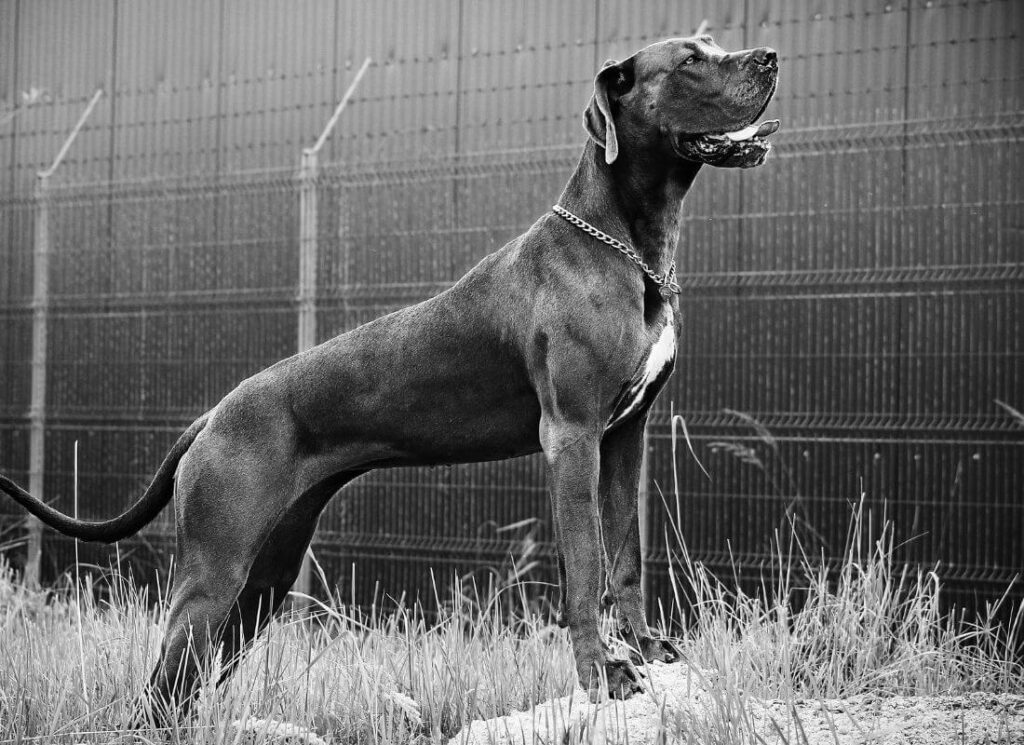
What happens when dogs don’t get enough exercise?
Danes that do not get enough exercise are often destructive, anxious, and difficult. They can also suffer from health problems such as weakness and flat feet, resulting from a lack of muscle development and unrestricted movement.v
Some dogs need more than just 30 minutes, too!
All of that pent-up energy has to go somewhere, and chances are that you are not going to like where your big dog puts that energy. (Goodbye, couch!).
We say this often and we will say it again; for most dogs, a daily leashed walk and some toys are just not enough.
Think about how many dogs lived before vast urban environments and busy suburban lifestyles became normal.
They were free to run, play, nap, explore and sniff around. Many of them were never on a leash. A lot of dogs worked by chasing rats, herding livestock, retrieving things, or hunting.
Dogs would run, play in the water, pick up sticks, nap in the grass, and then run some more. Aggression and anxiety were minimal at best.
Destructive, anxious, frustrated, reactive, and difficult dogs are a modern concept that has come with the belief that dogs should stay indoors most of the day and live their life restrained by leashes, harnesses, and collars.
Modern dogs are all too often coddled, humanized, and isolated.
We all want to spoil and love on our pets, but we should never forget that they are still, in fact, dogs.
We believe that whenever possible, dogs need to be able to run and play freely without being restricted by a leash. This is how they relieve stress, build confidence, and stay mentally and physically fit.
Not to mention the fact that Great Danes are prone to several orthopedic health issues, which can be made worse by the overuse of physical restraint. This is especially true when relying heavily on training tools such as front-clip harnesses or head collars.
All dogs must learn to walk politely on a leash, however, given the chance, being off-leash as much as possible is a much more humane and healthy choice.
Off-leash training comes with responsibility, though! You should only let your Dane off-leash if they have excellent recall, an appropriate temperament, and only in places where doing so is safe, appropriate, and legal.
Prioritize this training. We recommend E-Collar training for all Great Danes. If your Dane cannot be off-leash or is dangerous to people or dogs, work with a trainer! They may be able to help.
If you live in an urban area, many dog parks provide a great opportunity for your friendly and social Great Dane to play and move.
We are covering dog parks in more depth below; they can be good OR bad, depending on the situation!
How do I Keep my Great Dane Healthy?
Great Danes are prone to several health issues that can shorten their lifespan.
Some of these issues are genetic, and some are environmental. Unfortunately, because Great Danes are so unusually large, they are more susceptible to environmental factors than other dogs.
Great Dane joint health
Great Danes grow extremely fast as puppies. The wrong nutrition and too much of the wrong kind of exercise can do a number on their joint health, which will affect them into adulthood.
Not only that but Great Danes are plagued by unethical breeders who are carelessly passing on structural faults, which are damaging and painful to our gentle giants.
Roached backs, weak hips, cow hocks, dysplasia, flat feet, and poor angulation all play a role in how a Great Dane moves and functions in its body.
Dogs with poor structure will especially benefit from strength-building and natural movement on soft, varied terrain.
Make sure you are choosing diligent breeders who are proving their dog’s structure before breeding them.
Good nutrition will contain natural joint support (such as glucosamine chondroitin) from cartilage (look for a meat meal and/or a meat by-product meal in your pet food).
Great Dane weight
Keeping your dog at a healthy body weight is one of the most important things you can do to keep them healthy!
Great Danes are especially prone to obesity, which puts a lot of strain on their joints and internal organs.
On average, dogs that are kept lean and fit will live 2 years longer than if they are allowed to become overweight!
You should be able to feel your dog’s ribs without too much effort. If you can’t, they are likely overweight and could benefit from a change in diet and an increase in exercise.
Obesity in Great Danes can lead to heart problems, diabetes, arthritis, and more.
Great Dane nutrition and food
Nutrition plays a key role in the health of any dog, but it’s especially important for Great Danes.
As we mentioned before, they grow very quickly and their bones and joints are under a lot of strain. Young dogs are particularly susceptible to joint injury, bone growth problems, and the development of health problems such as brittle bones and knuckling.
A diet that is too high in calcium or not balanced correctly can cause problems down the road. Your dog’s diet can greatly impact their health, and the best foods for Great Danes may not be what you think!
DCM (heart failure) is a problem associated with poorly formulated and poorly researched foods.
Many pet foods have excellent marketing departments but have people with questionable credentials formulating the food that your dog eats every single day. They market these foods with unregulated terms such as ‘holistic’, ‘human grade’, and ‘super-premium’.
We recommend feeding your Great Dane the following brands (see our list below, all are clickable).
- Purina Pro Plan Large Breed Puppy – any flavor!
- Purina Pro Plan Sensitive Skin & Stomach Large Breed puppy – TOP PICK, salmon-based
- Eukanuba Large Breed Puppy (Great for active and sporting dogs)
- Purina One Large Breed Puppy (Excellent budget option)
- Hill’s Science Diet Puppy Large Breed
- Royal Canin Giant Puppy Dry Dog food (to age 12 months) – TOP PICK, PREMIUM OPTION
- Royal Canin Giant Junior Dry Dog food (8-24 months)
- Purina Large Breed Puppy Chow
Check out THE GIANT DOG FOOD PROJECT to compare brands and values.
- Purina Pro Plan Sensitive Skin and Stomach Large Breed (Salmon based, chicken free)
- Purina Pro Plan Large Breed Shredded Chicken & Rice (Large Pieces & Chicken Shreds!)
- Purina Pro Plan Large Breed Weight Management (Get the weight off)
- Purina Pro Plan Large Breed Bright Mind Age 7+ (for Senior Great Danes)
- Purina Pro Plan Giant Breed (Hard to find, might be discontinued)
- Royal Canin Giant Breed (Amazing for dogs with chronic loose stools, TOP TIER)
- Eukanuba Large Breed (Great for active and sport dogs)
- Purina One Smart Blend Large Breed (Fantastic budget-friendly option)
- Hill’s Science Diet Large Breed Beef & Rice
- Purina Pro Plan 30/20 Sport Beef & Bison
Nothing else compares when it comes to research, science, nutrition, quality, and dedication to correct formulations.
Puppies, including giant breeds such as Danes, should receive puppy foods until 18-24 months. Use manufacturer guidelines and the recommendation of your veterinarian as a guide for this.
What are the Best Forms of Exercise for Great Danes?
Not all exercise is created equal! Here are some of the best ways to provide movement and enrichment to your dog.
Off-Leash Enrichment and Free-Play
As above, we believe that off-leash enrichment and free play are ideal activities for Great Danes.
Use a long leash until your dog has a rock-solid recall, and be mindful of when and where you let your dog off-leash (especially if there are children, wildlife, or traffic nearby).
E-Collar training is a gentle and positive way to ditch the leash! The sensation from an e-collar replaces leash pressure, and dogs respond enthusiastically to this communication.
If you want to learn more about getting your dog off the leash once and for all, our famous Great Dane E-Collar Training Guide will get you, and your dog, off to a fantastic start!
Puzzles & brain games
Slow eating is an excellent way to reduce bloat risk in Great Danes. Bloat is a deadly condition and dogs who eat quickly are at a higher risk of experiencing it.
Puzzle feeders and slow feeders are a great way to turn mealtime into enrichment time!
Your dog will have to use their brain to figure out how to get the food out of the toy, and they’ll be getting a little bit of exercise in the process. Here are some of our favorites!
Are Dog Parks Good?
Dog parks are not for every dog, and they are not always good.
It depends on the individual dog, the other dogs at the park, the type of park, and how well-supervised the play is.
We never want to see a bunch of overwhelmed, over-excited dogs in a small boring fenced area with owners who aren’t paying attention.
The best dog parks are large (multiple acres), have varied terrain (including hills and different textures such as water, grass, sand, gravel, wood, etc.), and the dogs there can easily choose to interact with or avoid other dogs.
When taking your dog to a dog park, evaluate whether or not your dog has the temperament for it. Dogs that are fearful, nippy, pushy, or aggressive need to be working with a trainer, not visiting the dog park.
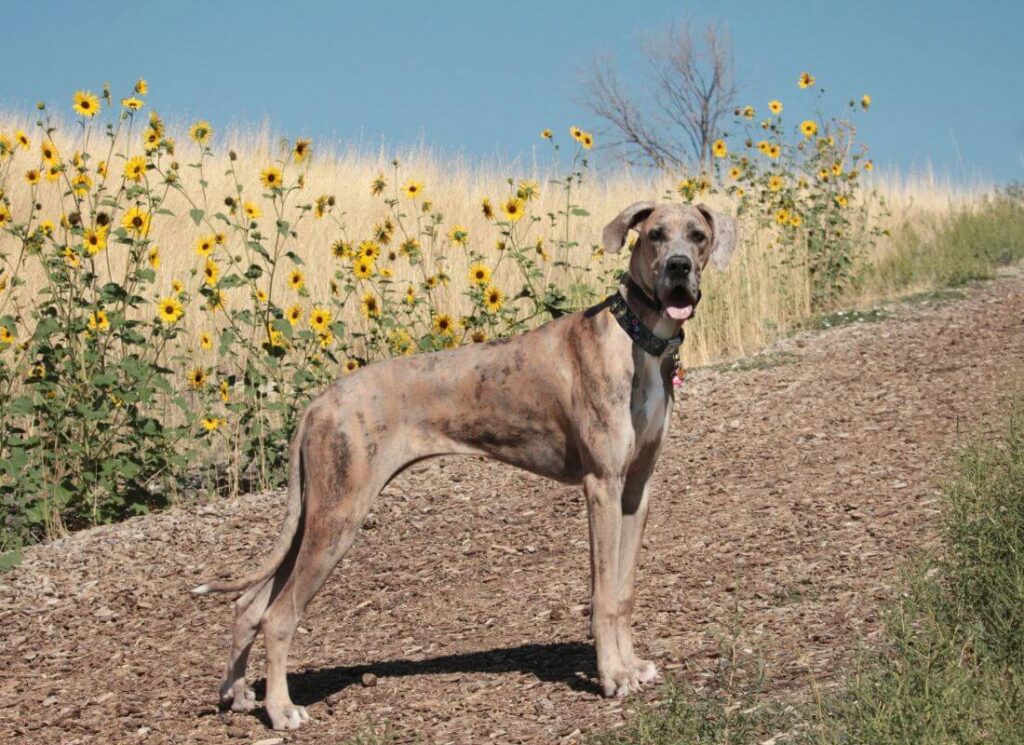
Training your Great Dane
Dog training classes are a fun way to provide enrichment for you and your dog! Obedience classes don’t have to stop with Puppy Class 101 graduation.
Many great trainers offer weekly drop-in classes where you can work on your Canine Good Citizen title, scent work, confidence building, and more.
As a Great Dane owner, you must be willing to put the time into training.
A Great Dane is such a large dog that pulling, nipping, running away, fence hopping, and jumping on guests can be dangerous.
Attending training classes is a solid win-win for both enrichment and sanity reasons!

